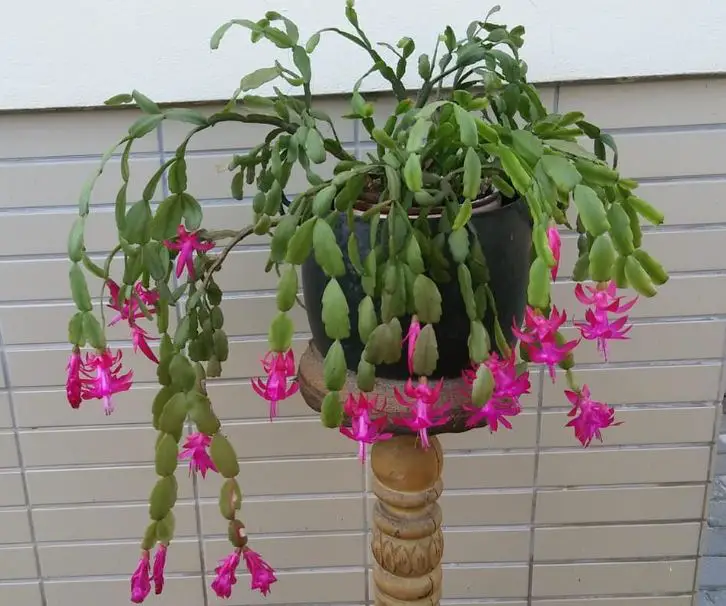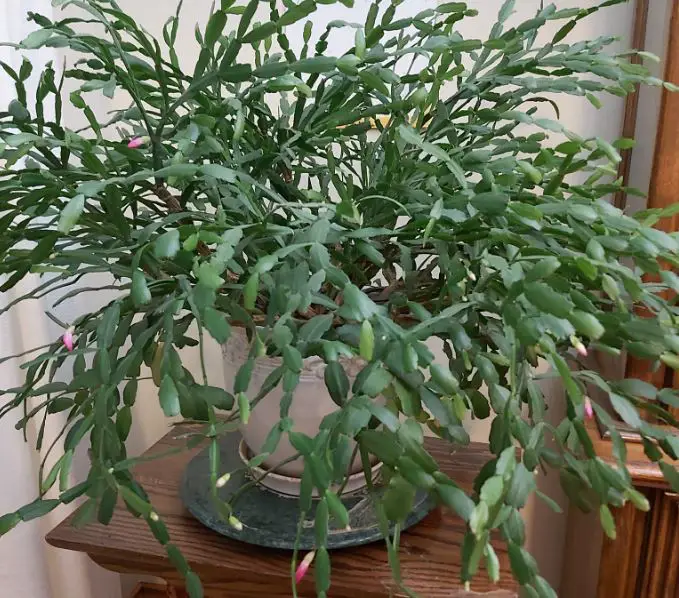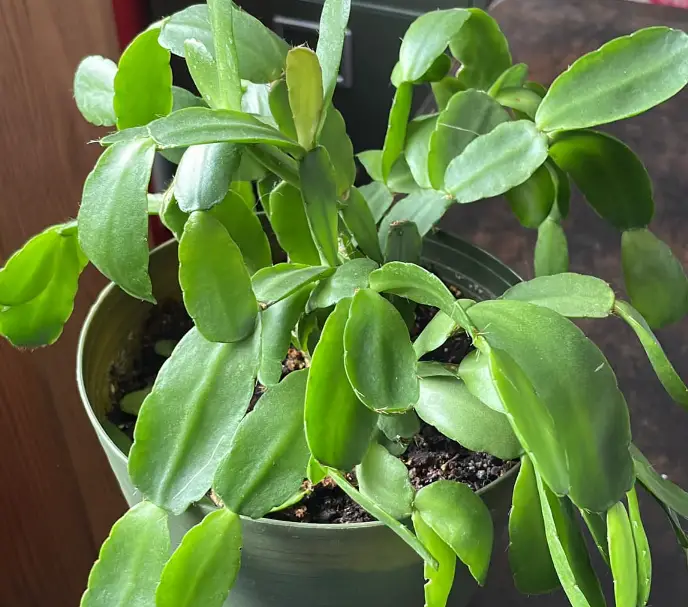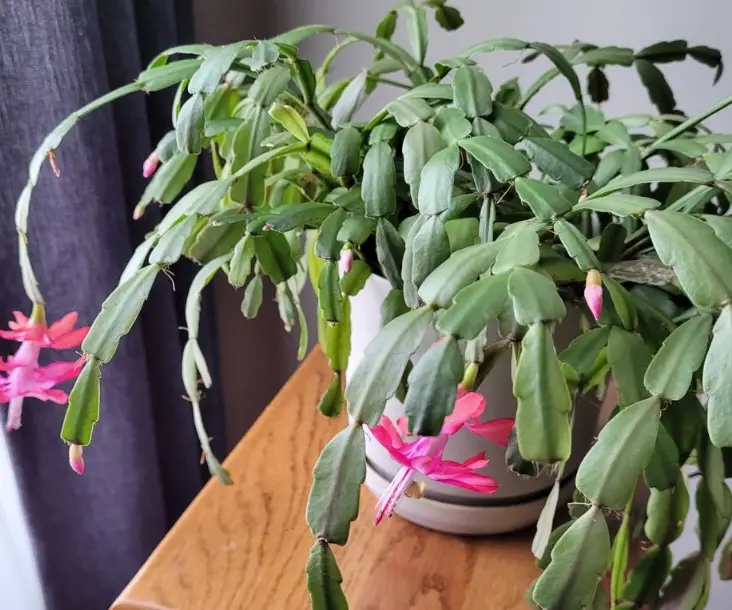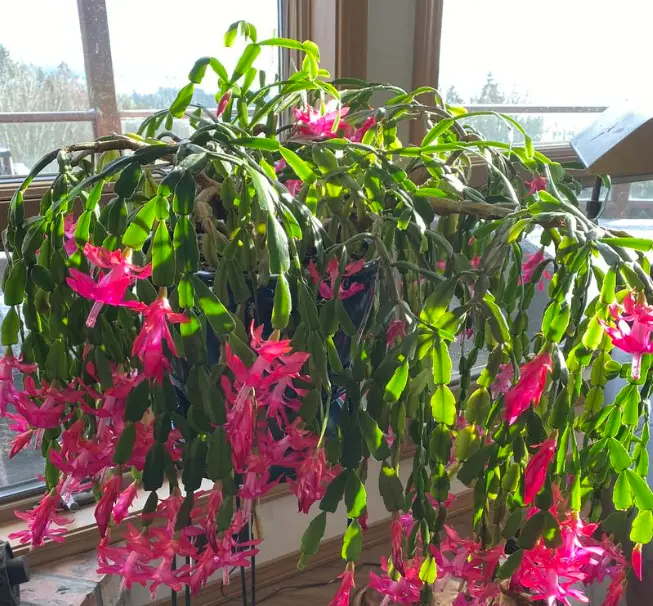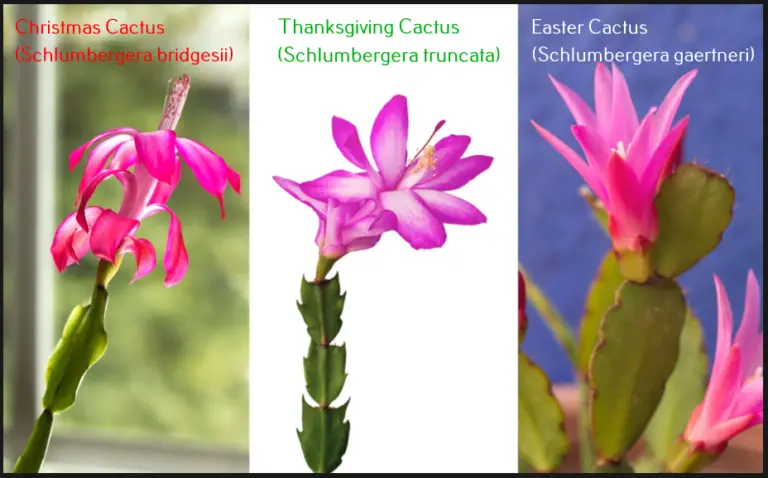Christmas Cactus Temperature Requirements and Cold Hardiness
The Christmas cactus is a popular houseplant known for its beautiful, showy blooms that appear in the winter. This plant is quite sensitive to temperature and should be protected from frost and heat. That’s why it becomes important to understand its cold hardiness and temperature requirements.
The ideal temperature for a Christmas cactus is between 60-70 °F (15- 21°C) during the day and 60-65°F (15-18°C) at night. Flower buds form in temperatures between 50 and 60°F (10 and 15°C). Therefore, keep the plant in a cool dry place during the fall to promote blooming.
According to the U.S. Department of Agriculture plant hardiness, the Christmas cactus, (Schlumbergera) is typically considered a zone 11 plant. This means, the cactus can only survive in tropical and subtropical regions, or indoors in temperatures above freezing.
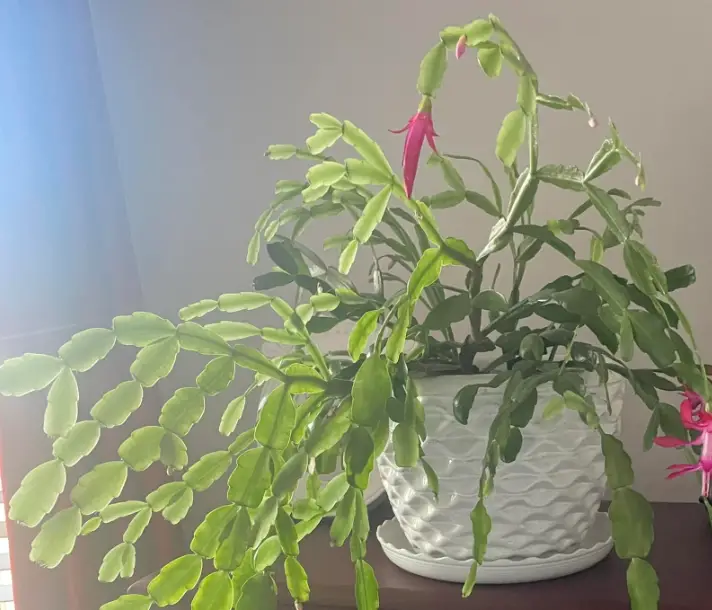
Ideal Christmas cactus temperature
Unlike desert cacti, Christmas cactus does not originate in dry hot conditions. Rather, it is a succulent native to Brazilian tropical forests where they grow as epiphytes on rocks and tree branches. The plant has adapted to warm temperatures, dappled sunlight, and humid conditions of the forest.
As a houseplant, a Christmas cactus should be grown is in a room with bright, indirect light. This means placing it near a window that receives plenty of natural light, but not direct sunlight, which can scorch the leaves. Leaves turning red or brown is commonly a sign of sunburn on the cactus.
In case you don’t have a window that provides bright indirect light, you can also use artificial light (fluorescent light) to supplement the cactus light needs.
The cactus should be kept in a room where the temperature ranges between 60-70 degrees Fahrenheit during the day and between 60-65 degrees F at night. In high temperatures, the plant may experience stress, resulting in leaf drop, lack of flower buds, and generally poor growth.
To promote flower bud formation during the fall, keep the plant in total darkness for 12 to 14 hours daily for six to eight weeks. The place should be cool and dry with temperatures between 50 and 60°F respectively.
When blooming, it is important to keep the Christmas cactus away from heat sources and drafty windows or doors. High humidity or fluctuating temperatures can stress the plant resulting in flowers or buds falling off the Christmas cactus.
Christmas cactus cold damage
Christmas cactus is not tolerant of extremely cold conditions. Temperatures below 50 degrees Fahrenheit may cause severe damage to the plant. When expose to frost, the cactus may turn black, wilt, or die.
To prevent cold damage, it’s important to keep the Christmas cactus plant in a warm room and away from drafty windows or doors during the fall and winter months.
How to save the plant
If a Christmas cactus has been exposed to cold temperatures, there are a few things you can do to try and save it from damage.
- Move the plant to a warm room: Bring the cactus inside and keep the temperature between 60-70 degrees Fahrenheit during the day and between 60-65 degrees Fahrenheit at night.
- Provide bright, indirect light: Place the cactus near a window that receives bright, indirect light. You may use artificial lighting in a place without natural light.
- Water sparingly: Cold-damaged cactus is more susceptible to rot, so water it sparingly until the plant shows signs of recovery.
- Wait for new growth: Be patient and wait for the frost to end before pruning away damaged parts.
- Keep the plant away from heat sources: Keep the cactus away from heat vents, fireplaces, or other sources of hot air.
Note that a severely cold-damaged Christmas cactus may not recover especially when the foliage and roots have decayed. Even if the plant recovers, it may bloom. But with proper care, the plant may recover and bloom the following year.
Final Thoughts
Christmas cactus isn’t drought not cold hardy plant and it’s best when grown indoors where temperature and other growth conditions can be controlled. However, you can take your cactus outside during summer to enjoy warmth and humidity but be sure to keep it in a shade.
Remember to bring the plant indoors before the first frost. If the cactus is already exposed to cold temperatures, move it to a warm room and avoid exposing it to any further stress until it has recovered.
References
- The North Carolina University Extension: Christmas Cactus Care
- The University of Florida: IFAS Extension: Christmas Cactus
- The University of Minnesota Extension: Holiday Cacti
My name is Diane M Lewik, and I am the founder of this website. I am a degree holder in plant biology from the University of California – Berkeley. Over the years, I have cultivated a vast collection of succulents and I have learned a great deal about how to grow and care for these unique plants. Feel free to ask any questions in the comment section below.
